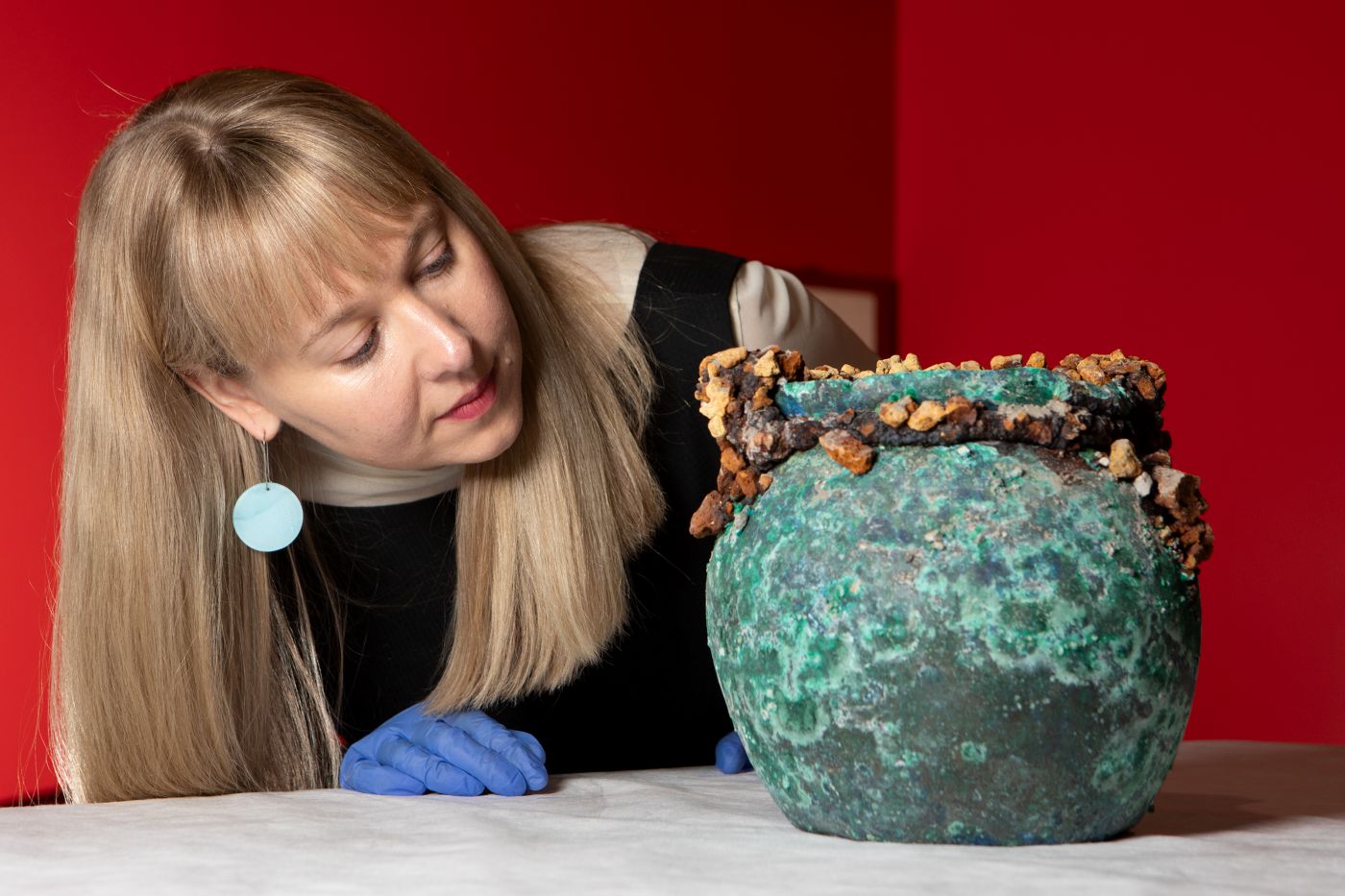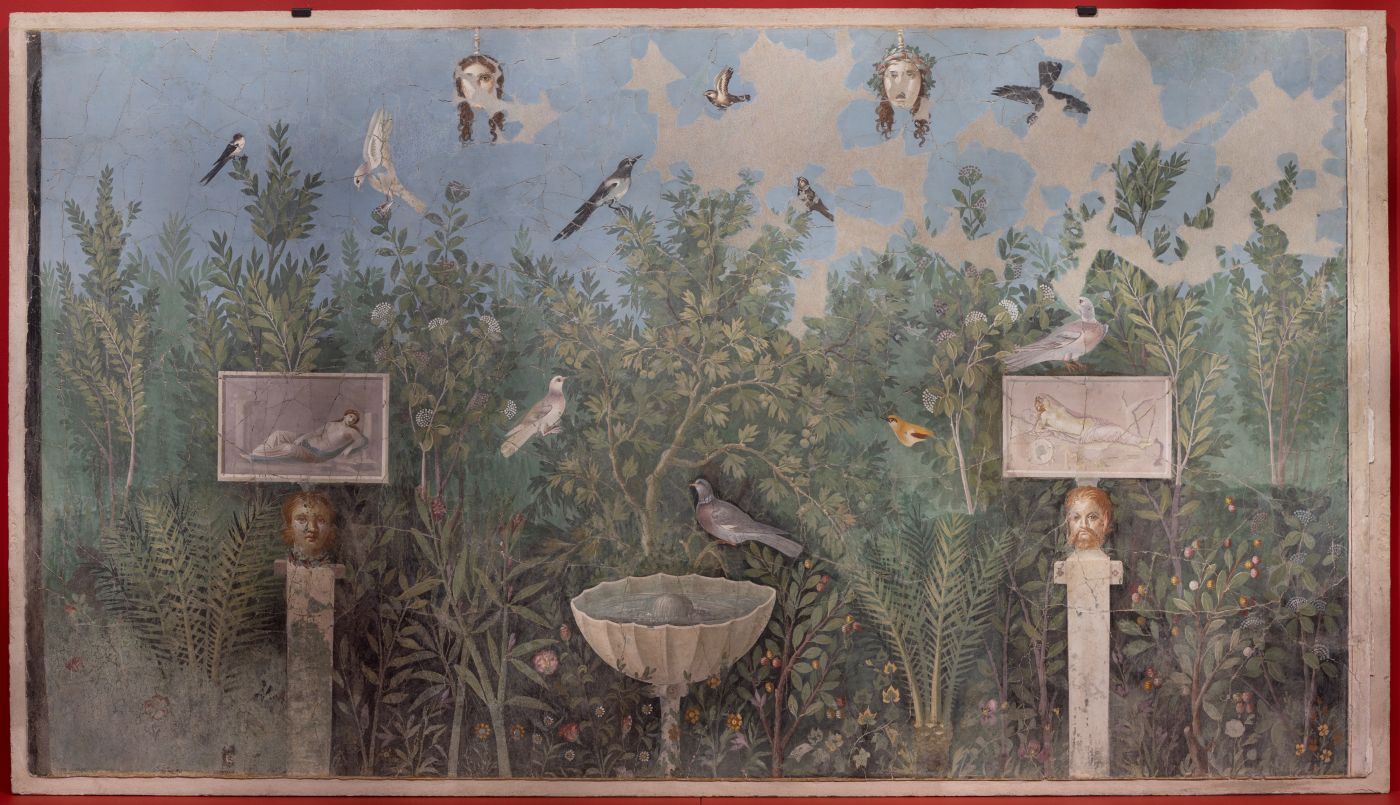Check out our top tips for making the most of your journey through the lost city of Pompeii.

The National Museum’s new Pompeii exhibition is a unique sensory journey through one of the ancient and contemporary world’s most famous cities.
The exhibition combines evocative soundscapes, large-scale digital projections and over 90 remarkable artefacts that reveal the wonder and tragedy of Pompeii in a new way.
Tip 1: Avoid the queues
Book early and in advance so you can arrive at the Museum and start your journey into Pompeii without queuing for a ticket.
Tip 2: Explore at your own pace
The exhibition’s multi-sensory approach invites you to wander, look, listen and move through time and space.
You will experience life in Pompeii moments before the eruption of Mount Vesuvius and observe contemporary archaeology in action as discoveries are made on present day excavation sites.
There is no fixed path so take your time.
Tip 3: Beware the volcano
Visitors to this exhibition will witness a recreation of one of the most awesome and dramatic events in the earth’s tectonic history.
Approximately every 15 minutes, a high-definition panorama of Mount Vesuvius will recreate the moment when the city of Pompeii was changed forever.
This experience will help you to feel as though you are in the moment of the eruption in 79 CE.

You will hear the eruption before you see it. A deep rumbling will let you know that Mt Vesuvius is about to erupt. A large screen depicting the volcano will appear to emit waves of ash that will move quickly along screens on either side of you. Rains of volcanic rock will fill the screens and the gallery will darken.
The eruption lasts for 30 seconds. The gallery space will be darker (but still illuminated) for 10 seconds, before returning to brighter lighting, evoking daytime.
Note: If you have children with you, or anyone who may be sensitive to sudden changes in light and sound, you may wish to stay with them during the eruption.
You could also move into one of the four exhibition rooms. There are no screens in the Daily Life section, also known as the House of Julius Polybius (Domus 1), which is an object-only space.
Adjustments: Visitors may bring noise-cancelling headphones or visit the exhibition during quiet hours sessions, which run monthly from February 2025.
Tip 4: Rooms with a view
Pompeii includes over 90 exquisite objects from the from Archaeological Park of Pompeii in Italy.
These carefully chosen artefacts have been arranged to reveal why the story of Pompeii has captivated hearts, minds and imaginations around the world and across generations.
These are some of our favourite objects. Click on the images to learn more.
Tip 5: Keep learning about Pompeii
Continue your journey after the exhibition with issue 24 of the Museum magazine.
You’ll find fascinating articles from some of the world’s foremost archaeologists (many of them Australian!) and Italians who live and work in Pompeii.
There are also more personal contributions that invite you to reflect on the story of the ancient city, as well as the experience of Italian Australians, in new ways.
We would love to hear your responses to the exhibition. Feel free to email curator@nma.gov.au with your thoughts and feedback.







